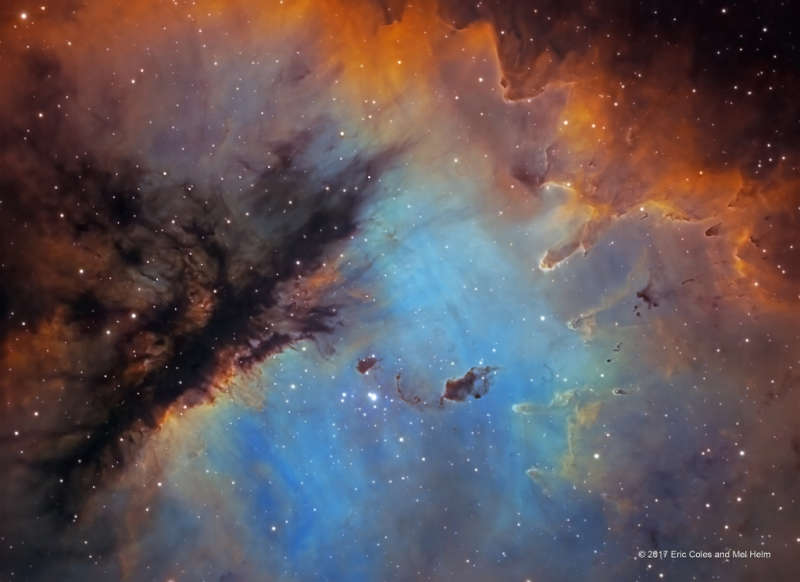
|
Credit & Copyright: Eric Coles and
Mel Helm
Explanation:
Look through the cosmic cloud cataloged as NGC 281
and you might miss the stars of open cluster
IC 1590.
Still, formed
within
the nebula that cluster's young, massive stars
ultimately power the pervasive
nebular glow.
The eye-catching shapes looming in
this
portrait of NGC 281 are sculpted columns and dense
dust globules
seen in silhouette, eroded by intense, energetic winds and radiation
from the hot cluster stars.
If they survive long enough,
the dusty structures could also be sites of future star formation.
Playfully called
the Pacman Nebula because of its overall shape,
NGC 281 is about 10,000 light-years away in the constellation
Cassiopeia.
This sharp composite image was made through
narrow-band filters,
combining emission from the nebula's hydrogen, sulfur, and oxygen
atoms in green, red, and blue hues.
It spans over 80 light-years at the estimated distance of NGC 281.
|
January February March April May June July August September October November December |
| ||||||||||||||||||||||||||||||||||||||||||||||||
NASA Web Site Statements, Warnings, and Disclaimers
NASA Official: Jay Norris. Specific rights apply.
A service of: LHEA at NASA / GSFC
& Michigan Tech. U.
Based on Astronomy Picture
Of the Day
Publications with keywords: NGC 281 - star formation
Publications with words: NGC 281 - star formation
See also:
- APOD: 2025 July 10 Á Lynds Dark Nebula 1251
- APOD: 2025 June 23 Á W5: Pillars of Star Formation
- APOD: 2025 April 28 Á Gum 37 and the Southern Tadpoles
- APOD: 2025 March 26 Á Star Formation in the Pacman Nebula
- APOD: 2024 November 18 Á Stars and Dust in the Pacman Nebula
- APOD: 2024 October 22 Á M16: Pillars of Star Creation
- Star Factory Messier 17
